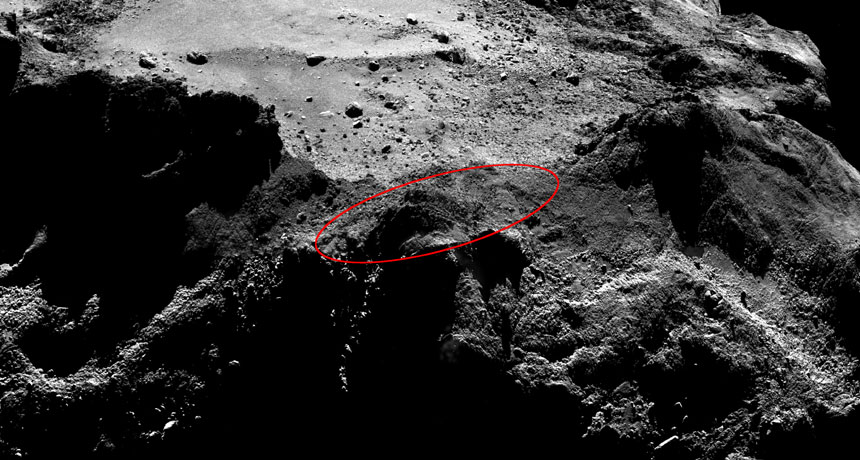Rosetta probe to start listening for the lost lander Philae

Rosetta scientists think Philae landed somewhere in a boulder-filled landscape (circled). In this image taken 20 kilometers from the comet, Philae would be no larger than three pixels.
ESA/Rosetta/MPS for OSIRIS Team MPS/UPD/LAM/IAA/SSO/INTA/UPM/DASP/IDA







